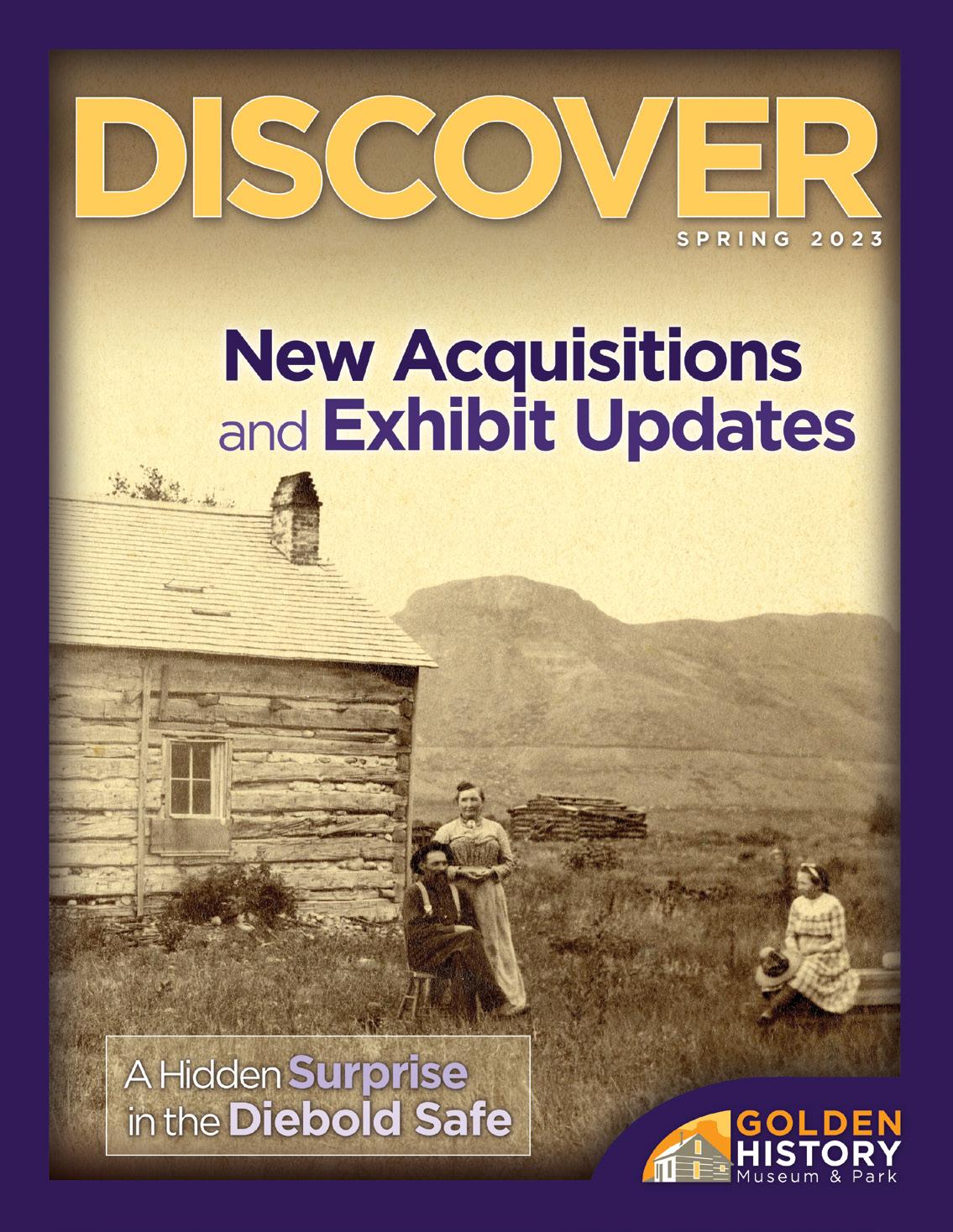
Director’s Welcome
Dear Supporter, Last year was one for the record books for GHM&P! We saw a full rebound in attendance, smashing pre-COVID records with nearly 25,000 visitors to the Museum and some 250,000 visitors to the Park. This year we are gearing up for what we anticipate will be an even busier summer season. We are working on a number of initiatives including the continuation of our Indigenous Connections Project, the development of a new Clear Creek gallery, and a new exhibit commemorating the 150th anniversary of Golden High School—the oldest continuously operating school in Colorado! We also have some exciting events coming up, including a GHS 150 Party on Thursday, August 24, and the beloved annual Autumn Fest on October 1!
We’re also thrilled to welcome our new curator, Stephanie Gilmore, who started November 1 and came to us most recently
Staff

from the Colorado Railroad Museum. Stephanie has immediately rolled up her sleeves and created new exhibits, refreshed artifact displays, and gotten deep into planning for future exhibitions. As we welcome Stephanie, we are saddened to announce the departure of our departmental leader, Parks, Recreation, and Golf Director, Rod Tarullo. Rod was instrumental in transitioning the museum to City operations in 2010. We wish Rod the best as he begins his new journey as Director of Parks and Recreation in Glenwood Springs, Colorado. Whether it’s dropping off your children at summer camp, attending a special event, or a visit with your out-of-town guests, we look forward to seeing you here this summer!
DISCOVER I SPRING 2023 IN THIS ISSUE
Autumn Fest
Chemicals, Tear Gas, and Explosives, Oh My!
Indigenous Connections Project Programs

Exhibit Updates
Education Roundup

Staff & Volunteer Profile
Golden High School Yearbooks
Donors Membership
The Salon
Nathan Richie Britton Taylor
Stephanie Gilmore Vanya Scott Director Education Assistant Curator Curatorial Assistant
Jesse Gagnon Kathleen Eaton
Doug Skiba
Andrew Terrill
Student and Interpretation and Development and Graphic Design Family Programs Visitor Experience Communications and Layout Coordinator Coordinator Editor (Discover) (Freelance)
2 DISCOVER I SPRING 2023
Cover image: Jonas and Elizabeth Wannemaker and their child outside their cabin in Golden, Colorado.
Photos © Golden History Museum & Park, City of Golden Collection
3 4 7 10 12 14 16 17 18 19 20
Nathan Richie, Director
Sunday, October 1, 10 a.m. - 3 p.m.
Autumn Fest is a FREE celebration of Golden featuring hands-on activities for the whole family, including crafts, big trucks, and even farm animals. Join us to welcome the fall season at Golden History Museum (923 10th St.).

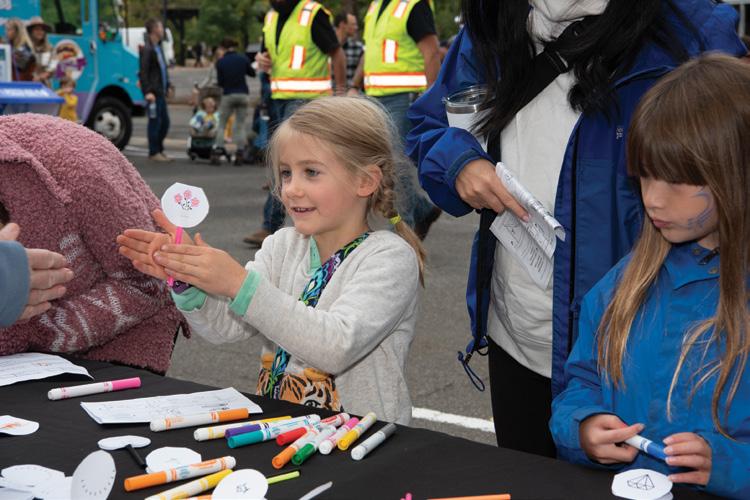

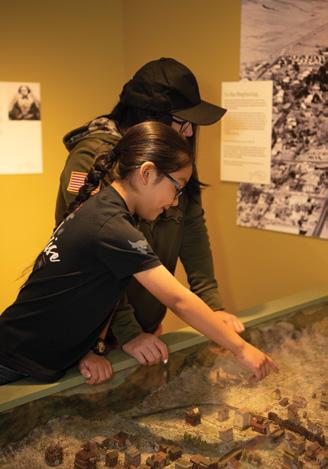
GoldenHistory.org/aufest
Sponsored by:
Dolan + Zimmerman LLP
Downtown Development Authority
Fuicelli & Lee Injury Lawyers
Golden Downtown Development Authority
Lamber Goodnow Injury Lawyers
O’Sullivan Personal Injury Law Firm
Purvis Gray Thomson
City of Golden and The Coloradans who support the Scientific and Cultural Facilities District


DISCOVER I GoldenHistory.org 3
Photos © Povy Kendal Atchison
Chemicals, Tear Gas, and Explosives, Oh My!
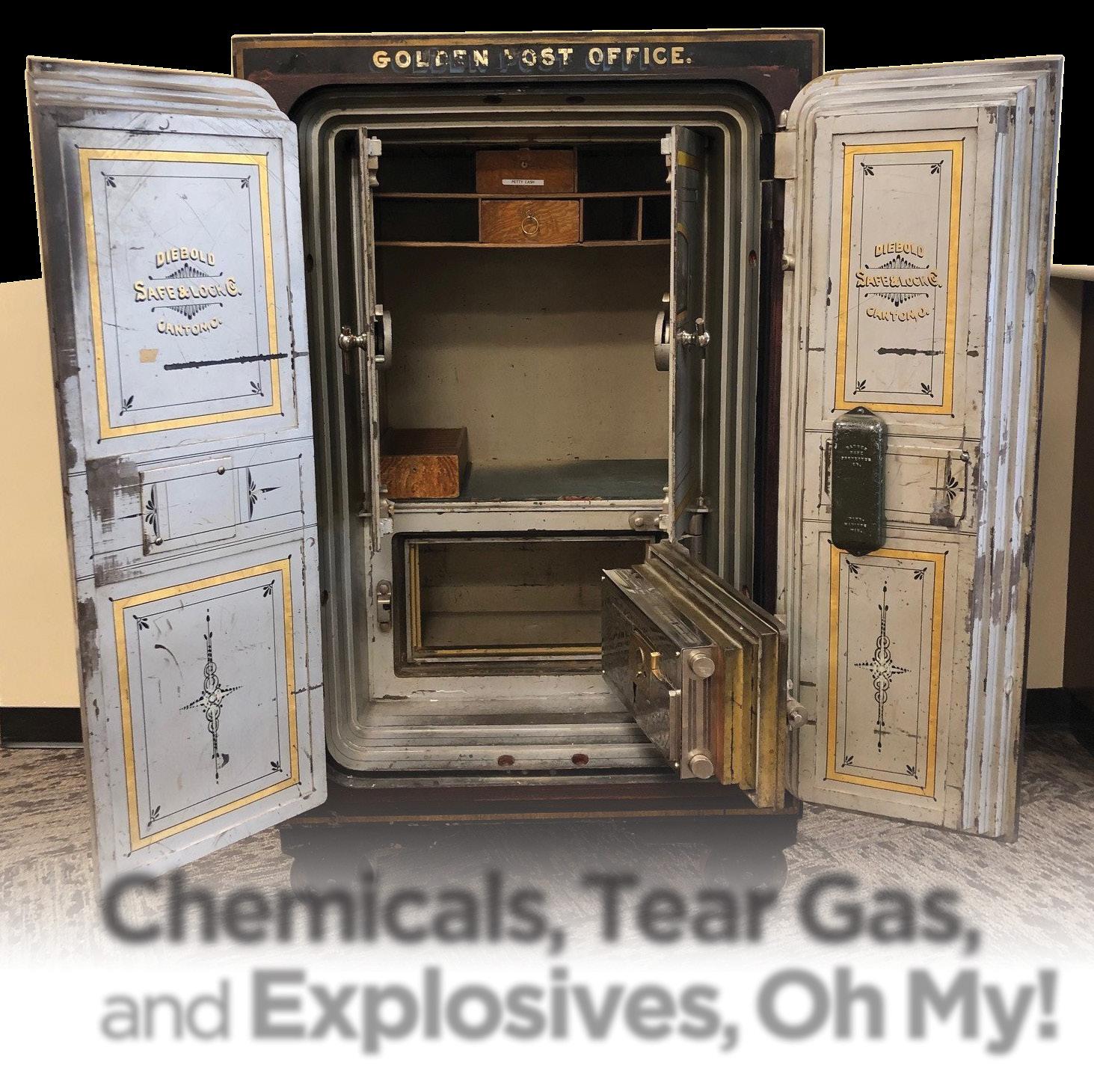 By Stephanie Gilmore
By Stephanie Gilmore
One of the things I love most about being a museum curator is you never know what you’ll encounter on any given day. Old collections hold so many fascinating stories—sometimes there are mysteries to be solved or unexpected discoveries waiting to be found.
When I started my new job as curator on November 1, 2022, I had no idea that it would involve a booby trap and a visit from the bomb squad. But, before we get to that, a little back story is in order.…
The Diebold Safe & Lock Company was incorporated in 1859 in Canton, Ohio. Founded by German immigrant Charles Diebold, the company started out manufacturing safes and bank vaults.
4 DISCOVER I SPRING 2023
Page looks on.
Diebold gained popularity and saw a major increase in sales when its safes managed to protect some of the only items that survived the Great Chicago Fire in 1871.
Golden jumped on the Diebold bandwagon in 1902. In that year, the Golden Post Office moved to the newly built southern storefront of the Rubey Block (1205 Washington). There, as part of his contract with the government, Jesse W. Rubey purchased the new post office safe from Diebold. A January 22, 1903, Golden Transcript article reported:
“The Golden postoffice (sic) has received its new Diebold anti-dynamite safe, and has it in place. It cost $325 at the factory, weighs 3,800 pounds and is a beauty.”

In 1914, the post office moved to the northeastern storefront of the newly completed Armory building at 1301 Arapahoe, leaving the Diebold safe behind on Washington. In 1948, when Wendell Plummer purchased Tierney’s Jewelry, the safe was rolled across the street from the old post office location to what was now Plummer’s Jewelry store at 1206 Washington. The Plummer family then used the safe at their jewelry store until they sold the business
from the safe.
to Creekside Jewelers in the year 2000. Creekside used the safe until 2021, when it was donated to the museum.
In May 2021, then-curator Mark Dodge had the daunting task of moving the 3,800-pound, 120-year-old Diebold safe from Creekside Jewelers to the Museum. While the move was a mere four city blocks, it was no easy feat. With the help of the Golden Streets Department, the safe was rolled down the street on a forklift, and after much huffing, puffing, and brute force, it was “safely” (pun intended) installed into the main gallery of the Museum.


Fast forward to 2022—upon closer inspection of the safe, Mark noticed a small metal fixture, roughly 8 inches tall, 2 inches wide, and 1.5 inches deep that was screwed to the back of one of the doors, directly behind the dial. This curious, after-market device was labeled “Badger Safe Protector Co., Patd. Madison Wis.” Also known as “The Silent Watchman,” this safe protector does not look like much at first glance, but a little research yielded some very interesting, yet disturbing results. Designed for burglars who strike or drill into the safe’s dial, the metal
casing houses two glass vials filled with a clear, yellow-tinged liquid. If these vials break, tear gas is released, incapacitating any would-be burglar. Mark had just begun researching the protector right before he left his position and, due to wrapping up nearly 18 years of work here, was not able to see it through. Furthermore, as the safe is over 100 years old and no incidents had occurred yet, it seemed as though all was copacetic.
Now the question for me was, is the tear gas still inside this thing? What noxious, 100-year-old chemical could reside within? Further research yielded even more alarming results.
Continued overleaf



DISCOVER I GoldenHistory.org 5
Photos © Golden History Museum & Park, City of Golden Collection
Officer Page documents the tear gas vials before removal
Sergeant Guess dons a gas mask in the curator’s office as Officer
Tear gas vials are intact after removal from the safe.
First, I found that the chemical most commonly used in Badger Safe Protectors was chloropicrin, a common WWI-era tear gas. Second, and perhaps more frightening, some sources suggested that over time chloropicrin could deteriorate into nitroglycerin! So now, not only could we potentially have a toxic gas on our hands, but it could also be highly explosive. Luckily, the Centers for Disease Control website clarified that while chloropicrin does not degrade into nitroglycerin, it can combust at temperatures higher than 234 degrees Fahrenheit. Still dangerous, but at least not imminently so.

Unfortunately, due to its metal housing, it was not possible to see if the glass vials were a) still present, and b) still filled with chemicals. The only way to figure that out would be to remove the protector from the safe. On the surface, it looked as though the protector was affixed to the door via just two simple slot screws, but nonetheless I wanted to be cautious in case the vials were still intact. I was not about to carelessly whip out a screwdriver without PPE (personal protective equipment) for myself, and most certainly would not do anything on a day when we were open to the public.
On a quiet Monday after Thanksgiving when the museum was closed, I started by calling the fire department to see if they could dispose of the tear gas. Having never seen anything like the Badger Safe Protector, they were not sure what to do and suggested I call the police. The police, equally astonished, decided to call the bomb squad. The bomb squad, having never encountered this situation before, advised us to err on the side of caution and move the safe to a contained space just in case the vials were still dangerous, until an officer could come and carefully remove the device. The bomb squad did some research and decided to send a sergeant, equipped with a gas mask, to the museum to deinstall the protector.
It took four police officers using all their might to move the safe into the nearest office at the museum, which happened to be my office, and the collections room. Then, once we closed the office door, Sergeant Guess donned his gas mask and
PPE, and with a slot screwdriver, carefully unscrewed the safe protector. Nothing happened, thankfully.
To our amazement, after a century of use, and after jostling its way down Washington Avenue as the safe moved from the Post Office to Creekside Jewelers, and finally to the Museum, two glass vials of liquid tear gas remained totally intact inside the Protector. True to form, the vials contained a light yellow, slightly viscous liquid, which is how chloropicrin commonly appears.

Officer Joe Page and Sergeant Steven Guess carefully packaged the safe protector and vials in bubble wrap and took them to be properly disposed of by the bomb squad.
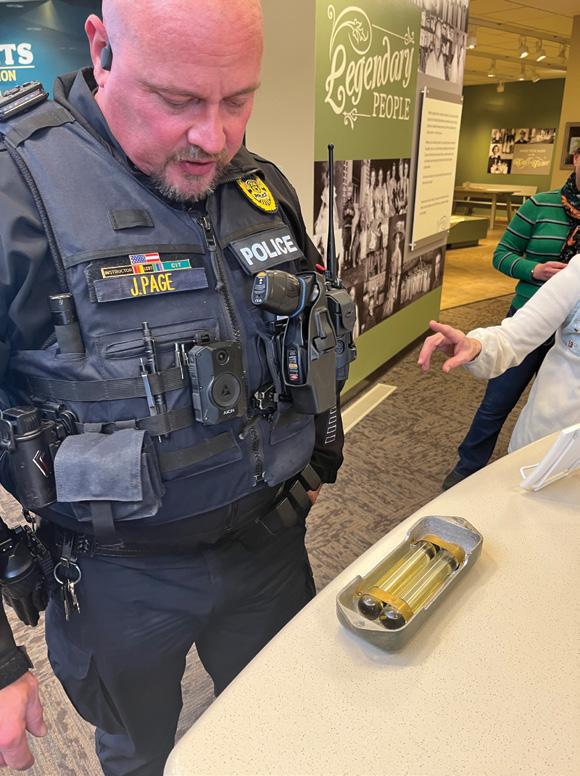
As the Badger Safe Protector is interesting on its own, but is also part of our Diebold safe’s history, we asked the bomb squad to retain the housing and return it (if possible)
to the Golden History Museum so we can continue to tell this fascinating story.
In early February 2023, Sergeant Guess returned the housing of the Safe Protector to the Museum. He related that the glass vials of chloropicrin did break when they were removed, but luckily the bomb squad was prepared and able to dispose of the gas under controlled conditions. I reinstalled the empty Safe Protector in the Diebold safe, where it now resides to tell this story for years to come.
As I get further into my new job, I look forward to other exciting collections findings—though, hopefully no more that contain dangerous compounds!
If you would like to see the safe and its infamous (but now diffused) anti-theft device, we invite you to visit the museum Tuesday through Saturday, 10 a.m. - 4:30 p.m.
Officer Page takes a closer look at the intact vials.
Indigenous Connections Project
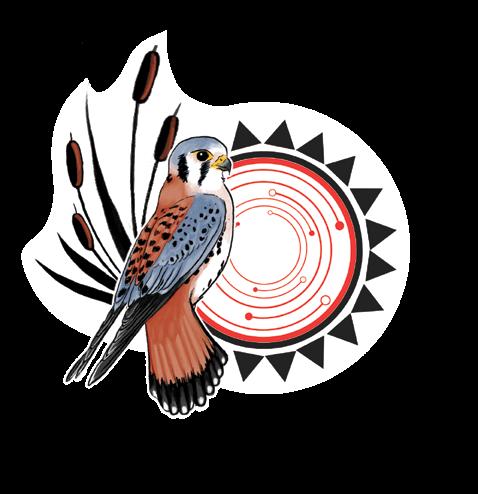
ative American history and connections to the Clear Creek Valley and table lands of the central Colorado Front Range extend back for more than 12,000 years. Contemporary Native American communities continue to view this place as an aboriginal homeland and a living landscape. However, today’s historical narrative of the region largely excludes Indigenous people and their values. To address this disparity, the City of Golden formed a partnership between its divisions of Museums and Planning, with the additional support of the Historic Preservation Board, to engage Native American tribes and ethnographic researchers to help tell the story of indigenous people in this region. The study involved cultural advisors from six American Indian tribes and a review and synthesis of relevant ethnographic literature. Together, the oral historical and documentary records provide a robust narrative about Native American connections to Colorado’s Front Range and create a foundation for future collaborative research with tribal communities.
Situated within the ancestral territory of multiple tribes, the Clear Creek Valley can be understood as a place where multiple Indigenous lifeways were practiced. All the components that make up this area—including viewsheds, night skies, soundscapes, trails, plants, animals,
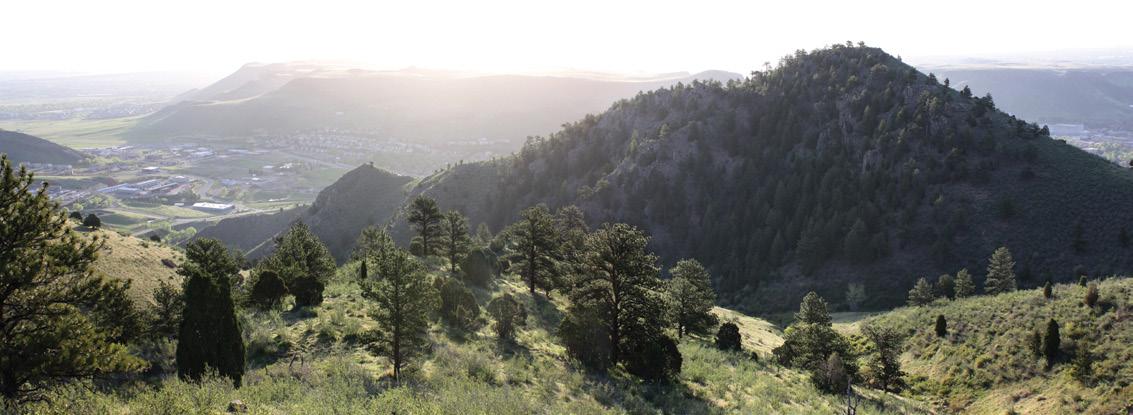
waterways, landforms, archaeological sites, and historical events—have value and significance to contemporary Native American people. Topography and habitats are some of the indicators of a homeland and cultural landscape to Indigenous people, as they provide physical and spiritual sustenance. The Clear Creek Valley provides an access corridor between the interior Rocky Mountains and the Plains. As an ecological transition zone, over 180 plant species found within the Golden region have documented Indigenous uses and names, and these serve as a foundation for Native American continued use and connections to the area. Ancestral sites have cultural and historical significance related to Indigenous lifeways and values on the landscape.
Tribal oral traditions and cultural activities continue to reinforce the long-standing connections tribes have to the region. In the oral histories of the Núuchiu (Ute), the area now called the City of Golden is located within the origin places of the Moghwachi, Tabeguache, and Uncompahgre bands and has been significant since time immemorial.
The oral histories and documentary record of the Tsétsėhést hese or Tsistsistas (Cheyenne) and Hinono’ei (Arapaho) reveal a history that began in the eighteenth century or earlier, and encompassed the Front Range of Colorado. Painful tribal histories, including the forced removal of the Utes from a
large portion of their ancestral lands, and the removal of the Cheyenne and Arapaho from Colorado following the Massacre at Sand Creek, are historically linked to the development of the City of Golden and are therefore essential components of Native American interpretation of the area. The City of Golden today recognizes that these oral traditions are an integral part to cultural identity and cannot be trivialized.
The publication Indigenous Connections: Native American Ethnographic Study of Golden, Colorado and the Clear Creek Valley can be downloaded free from the Museum’s Past Perfect Online Collection (GoldenHistory.org/PPO). This report is intended to be the very first step in cultivating strong relationships with Indigenous communities who continue to call Colorado home. We hope that this educational resource will be used widely and that other communities and cultural institutions will embrace and build upon this work for the greater understanding of the Indigenous presence in our region. Together we can share resources, ideas, and networks to work collectively to lift Indigenous voices in our communities. Community members are also invited to respond to a short, fourquestion survey to help guide our future work and help us prioritize what projects and initiatives the Museum should undertake next in this journey.
N
DISCOVER I GoldenHistory.org 7
Indigenous Connections Project
The following is an abbreviated excerpt of chapter two of Indigenous Connections: Native American Ethnographic Study of Golden, Colorado and the Clear Creek Valley.

Overview of the Golden region
The present-day City of Golden, Colorado, located in the Clear Creek Valley, lies within the overlapping aboriginal and historical territories of several contemporary Native American tribes. This chapter discusses the physical setting of Golden, briefly describes the development of Golden as a EuroAmerican settlement and situates Golden in a Native American cultural landscape.
Environmental Setting
The City of Golden is located along the banks of Clear Creek, 12 miles west of the City of Denver. The City of Golden is bounded by topographic features on all sides. To the north is North Table Mountain, to the east is South Table Mountain, to the south is Green Mountain, and to the west is Clear Creek Canyon. This topography provides a natural passage into the southern Rocky Mountains. The City of Golden is situated in a transition zone between two environmental zones, High Plains and the Southern Rockies (Chapman and others 2006).
Plant habitats are diverse in these environmental zones and 750 plant species have been identified within a 40 square mile area surrounding Golden (Schweich 2022; SEINet 2022). The High Plains begin in Golden and expand to the east. The High Plains are dominated by grasses and semi-desert plant species, many of which were used by Native Americans, including prickly pear (Opuntia spp.), Indian ricegrass (Achnatherum hymenoides), sages (Artemisia spp.), paintbrush (Castilleja
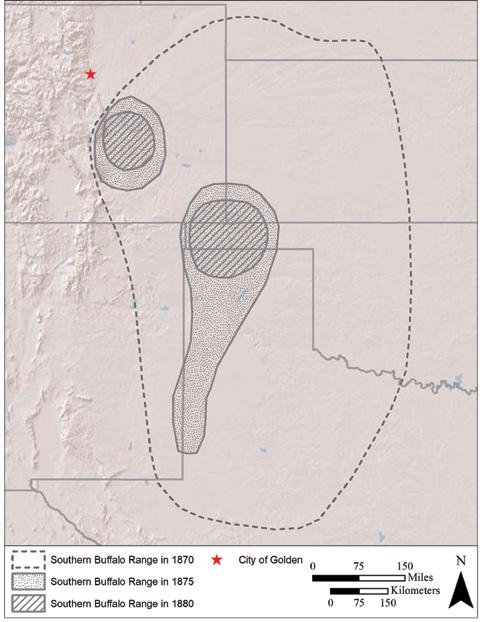
spp.), and wild buckwheat (Erigeron spp.). The Southern Rockies zone includes the foothills, canyons and mountain slopes of the Golden region. This area contains a diverse array of conifer trees, woodland species and wildflowers. Some plants traditionally used by Native Americans in these habitats include mountain mahogany (Cercocarpus montanus), junipers (Juniperus spp.), currants (Ribes spp.), Gambel oak (Quercus gambelii), Douglas fir (Pseudotsuga menziesii), ponderosa pine (Pinus ponderosa) and yucca (Yucca spp.). The third environmental zone found in both the grasslands and canyon areas are the lush riparian habitats around springs and along Clear Creek and the South Platte River. A variety of plants used by Native Americans are found in this zone, including chokecherry (Prunus virginiana), narrowleaf cottonwood (Populus angustifolia), cattail (Typha spp.), mint (Mentha arvensis), horsetails (Equisetum spp.), wild rose (Rosa spp.), elderberry (Sambucus spp.), gooseberry (Ribes spp.), raspberry (Rubus spp.) box elder (Acer negundo), willows (Salix spp.) and other water loving plants.
Plant communities are an essential component in Native American cultural landscapes. Cultural advisors from the Southern Ute Indian Tribe have stated
previously that a holistic view of plant communities should consider cultural beliefs and practices (O’Meara and others 2021:11). Native Americans obtained traditional knowledge through generations of observing, living in, and engaging with the environment (Anderson 2005; Berkes 2012; Cajete 2000). Traditional knowledge for many tribes emphasizes the interconnectedness of humans and their environment, and studies concerning Indigenous people necessarily privilege this knowledge system.
Native American Associations with the Front Range of Colorado
Native American presence along the Front Range of Colorado predated nonNative settlements by thousands of years. Through periods of attempted genocide, warfare, armed conflict, treaty making, removal to reservations, and assimilation policies, Native Americans maintained their presence in and their connections to the area. Native Americans today are working to reverse centuries of restricted access to their aboriginal lands, and reclaim their physical and spiritual connection to their
8 DISCOVER I SPRING 2023
Figure 2.1. Map showing the extirpation of the southern herd of bison from their range between 1870 and 1880. Bison are thought to have been extirpated from Golden by 1869. Adapted from Hornaday (1889:549).
aboriginal territory. They do this through harvesting of resources, story-telling, prayer, ceremonies, educating younger generations, and participation in consultation and ethnographic research. Ute, Cheyenne, and Arapaho people never abandoned their cultural connections to Colorado’s Front Range.

Archaeological evidence of Native American land use is found throughout Jefferson County (Koons and others 2021:1–2; SWCA 2018). Archeological evidence of Native American presence is documented since 9,000 BCE (Koons and others 2021:1–2). A search using the Office of Archaeology and Historic Preservation’s Compass database reveals 59 documented sites and isolated finds within an approximate fourmile radius around the City Golden. General site types include 28 Lithic Scatters, seven tipi ring sites, two camps, one isolated burial, three caves and rock shelters; 16 isolated finds; and one pit structure (Appendix C). Of these 59 sites, only four were recommended as eligible for listing on the National Register of Historic Places (NRHP), 31 were recommended as ineligible for NRHP listing, and 23 sites had an NRHP recommendation listed as undetermined. Based on the information found in this report the disparity between eligible and ineligible site recommendations is indicative that Native American cultural values have not been assessed during previous cultural resource surveys.
Sites such as Magic Mountain, located at the base of a sandstone outcrop along Apex Gulch south of Golden, represent Native American use of the area for at least 10,000 years. The materials found at this site represent indigenous lifeways, including artifacts associated with hunting and permanent settlement features with stone structures and ceramics. The Denver Museum of Nature and Science is conducting a community archaeology project at the Magic Mountain site and has consulted with cultural advisors from five tribes, including Ute Mountain Ute Tribe, Cheyenne and Arapaho Tribes of Oklahoma, Cheyenne River Sioux Tribe, and the Mandan, Hidatsa, and Arikara Nation (Koons and others 2021:6). Several rock shelters with evidence of ancestral use have been documented in the foothills around Golden, including the Hall-Woodland Cave, LoDaisKa, and Willowbrook (Nelson 1967:10–11). The Hall-Woodland Cave is located above an intermittent stream at the convergence of two ecosystems. Mule deer, badger, fox, black bear, coyotes, bobcats, and other culturally significant animals are found in the area (Nelson 1967:2).
The region’s topography, water ways, and plant and animal habitats continue to reflect the pre-contact Indigenous landscape. According to local traditions, one large ponderosa pine located in Jefferson County was repeatedly visited by Native Americans. This tree is dated to approximately 500 BCE, is listed on the National Register
of Historic Places as the Council Tree (Jefferson County Historical Commission 2021). The Council Tree, according to local traditions in Golden, is said to have been visited by Colorow, a Ute leader from the White River band, and Warshinun (Chief Friday), a Northern Arapaho leader, in the 1860s and 1870s. Consultation with associated tribal communities is ongoing to determine the historical and contemporary significance of this site and the accuracy of the local traditions surrounding the tree. Although the area was originally a rich hunting ground, the extirpation of the bison by 1869 around the Clear Creek Valley, and the near complete annihilation of the southern herd of bison by 1880 in the lower half of the United States had profound effects on Native American tribes (Hornaday 1889) (Figure 2.1).
After the reservation period began in the late-nineteenth century, Indigenous people continued to travel to and represent their communities in and along the Front Range in communities like Golden, Boulder, Denver, and Colorado Springs. Photographs illustrate Native American participation in events like the Democratic National Convention held in Denver in 1907, Boulder’s semi-centennial celebration in 1909 (Figure 2.2), the commemoration of the Ute Trail by the Southern Ute in 1912, and a pack trip with Northern Arapaho men in Rocky Mountain National Park in 1913. Golden is also the home of the Buffalo Bill Museum and Grave. Buffalo Bill was a nineteenthcentury entertainer who employed hundreds of Native Americans as performers in shows across the United States and Europe. Although his shows represent a complicated and problematic history in Native American representation, the participation of Native Americans in the shows warrants further study.
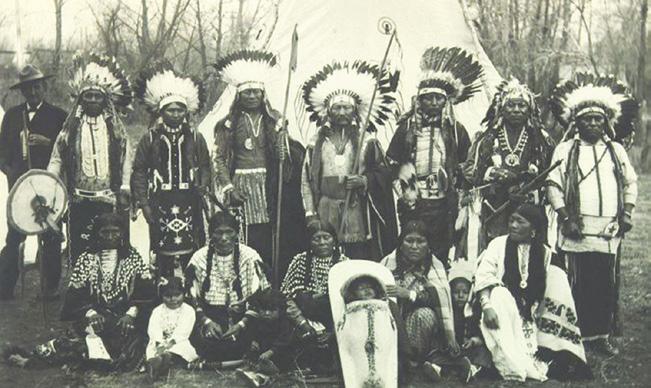
DISCOVER I GoldenHistory.org 9 Visit our website to read the report in full. Finally, watch the website and Discover magazine for updates on future engagement opportunities related to this ethnographic study.
Figure 2.2. A Ute group portrait with Ka púuta[S] leader Sapiah (Buckskin Charlie), standing row, fifth from the right) and his wife To-Wee (Emma Naylor Buck), seated, second from the left, in Boulder, Colorado for its semi-centennial celebration in 1909. Photograph by Ed Tangen. Photograph from the Boulder Historical Society, Catalog No. BHS 222-1-9.
GoldenHistory.org/ethnography
Programs
Programs are subject to change.
ONLINE
GoldenHistory.org/events
GoldenHistory.org/events
Visit our website for the most up-to-date details. Programs are free for members and $10 for non-members (plus eventbrite fee), unless otherwise noted.
Purchase advance tickets any of three ways:
1) eventbrite,
2) by phone during business hours, 303-278-3557, 3) in-person.
All activities at Golden History Museum unless otherwise noted.
May 3, June 7, July 5, August 2, September 6, 10:30 a.m. – 12:00 p.m.
Hands-on Activities at the Museum


Free for everyone (No registration required)
After enjoying story time presented by the Golden Library on the grass outside the museum, visit the museum for hands-on activities from 10:30 a.m. –12:00 p.m.! Activities are free, as is admission to the museum. Stop by and enjoy playing and learning!

Please visit the Golden Library’s website to sign up for story time which opens two weeks prior to each story time. (No sign-up is required to visit the museum.)
May 5, 6 p.m.
Borderlands Curanderos
Through an examination of the lives and healing practices of Teresa Urrea and Pedro Jaramillo, this presentation will shed light on the various meanings that the practice of curanderismo - a Mexican and Indigenous faith healing practice - held in the U.S.-Mexico borderlands over the turn of the twentieth century within the overlapping contexts of race, state-building, and professionalized medicine.

May 6, June 17, August 12, September 9, 9 a.m. – 12 p.m.
Fire Master Class with Aaron “Hutch” Hutchings
Each class $35 members ($115 for all four), $50 non-members ($175 for all four)
Whether adventuring in the outdoors or enjoying a book about adventuring in the outdoors, fire always comes up. In fact, it has been said that fire is directly related to every other survival priority. This fourpart series, taught by Aaron “Hutch” Hutchings, will explore both modern and historical ways of making fire, as well as safety and dealing with poor firemaking conditions. Anyone under the age of 16 must be accompanied by an adult. You do not need to attend the whole series, but the classes will build upon one another. There is a discounted price for attending all four classes. Supplies are included.
10 DISCOVER I SPRING 2023
1 3 4 2
Photo © Povy Kendal Atchison 1
2
Photo © Povy Kendal Atchison 3
May 27, June 10 & 24, July 8 & 22, August 5 & 19, September 2, 10 a.m. – 2 p.m.
Homestead Open House
Free for everyone (No registration required)
Interested in seeing sparks fly at the blacksmith shop, taking a lesson at schoolhouse, or watching the Pearce Cabin woodstove in action? Visit the Golden History Park on select Saturdays of each month from 10 a.m. – 2 p.m. from May - September to see all that and more! During these family-friendly events, you will be able to participate in hands-on activities, learn about pioneer history from our interpreters, and see special demonstrations. These events are free. Experience history in action!

Photo © Povy Kendal Atchison
July 15, 2023, 1:30 p.m.
Ranching Women of Colorado
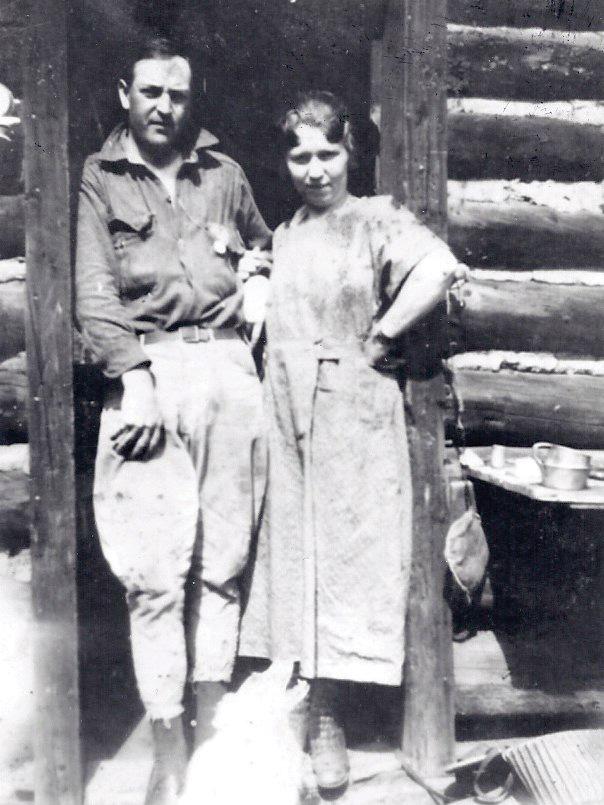
The 19th century west opened opportunities for women, including entering the male dominated ranching industry. Join author Linda Wommack as she tells the stories of women ranchers in Colorado. These women not only survived, but thrived, in a role outside the conventional norm. A Colorado native, Linda Wommack is a Colorado historian and historical consultant. An award-winning writer, she has written eighteen books on Colorado history.
August 9, 6 p.m.
History, Legacy, and Policymaking in Territorial Colorado; 1861-1876
This presentation discusses the political obstacles, cultural conflicts, and institutional racism experienced by Hispano legislators in the wake of the legal establishment of the Territory of Colorado in 1861. The new territorial laws put in place had effects on the lives of the 7,000 Hispano settlers from New Mexico Territory who were displaced into the newly formed Colorado Territory.
Virginia Sanchez is a historian, author, and independent scholar living in Denver. Her research about early Hispano and Indio history in southern Colorado appears in several published books and articles.
August 24, 6 - 8 p.m. SAVE THE DATE!
Golden High School 150th Anniversary Exhibit Opening
Free for everyone (No registration required) Reminisce about your high school years by joining us for this fun exhibit opening! Hands-on activities will include viewing GHS yearbooks (both paper and electronic) and making your own themed yearbook photo with our unique props. Finally, see items from the collection that highlight alumni, clubs, and fashions, including rare relief maps which once hung on the school walls in Golden.
September 14, 6 p.m.
Legendary Ladies (Costumed Interpretation)
$5 members, $12 non-members
Learn about extraordinary women who have made significant contributions to the history of the West. Hear how each made their own choices and worked through difficult times – empowering themselves and future generations to achieve and lead. By providing several vignettes during a single performance, audiences learn about a variety of extraordinary ladies and are often inspired to read more about the characters. Featured ladies at this performance are Bertha Spears, Mabel Dodge Luhan, Virginia Reed, Mary Chase, and Lola Montez.

October 14, 11 a.m. or 1 p.m.
Cemetery Tours
$5 members, $12 non-members
Visit the graves of legendary Golden characters with storyteller Barb Warden. Tours begin and end at the Golden Cemetery. This program is popular, so get your required tickets early. This is a rain-or-shine event; weather will not force a cancellation.
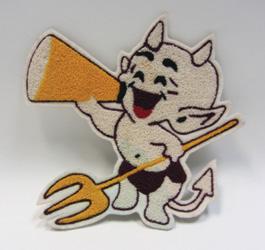
DISCOVER I GoldenHistory.org 11 6 7 5
Photo © Golden History Museum & Park, City of Golden Collection
Photo © Golden History Museum & Park, City of Golden Collection
4 6 7 5
Exhibit Updates
Some exciting changes have come to the exhibit galleries at Golden History Museum & Park (GHM&P), and more changes are yet to come. On your next visit, explore some completely different exhibits and the “new” artifacts in Epic Events and Legendary People
Now on view: A Survey of Indigenous Collections
Since its inception in 1938, Golden History Museum & Park has collected items that relate to Golden—primarily as they relate to the founding of the mining camp, Colorado Territory’s first capitol, then ultimately, the City of Golden. While GHM&P has collected some items that relate to Indigenous communities, the main focus of the museum collection has been the White settlement of the area.

In 2021, GHM&P commissioned an ethnography—a history of Native people, as told by Native people—in order to create a baseline research study about the Indigenous groups who call the Golden area and Clear Creek Valley home. Working with the Cheyenne, Arapaho, and Ute tribes whose ancestral land can be traced to here, GHM&P produced a report entitled Indigenous Connections: Native American Ethnographic Study of Golden, Colorado and the Clear Creek Valley The report identified archaeological sites, as well as native flora and fauna used by Indigenous peoples within the area.

While the ethnography was the first step, there is still much to be done regarding GHM&P’s collecting practices, interpretation,
and programming when it comes to Indigenous stories. As a next logical step in the process, we surveyed our Native-related collections and put together a new display nearest the entrance. We invite you to visit this thought-provoking exhibit to see how we have collected in the past and where we are going in the future.
A Relic from the Golden Age of Cinema
In the Legendary People gallery, we have moved in a legendary machine: a Simplex 35mm film projector that was used for nearly 30 years in the Gem Theatre. This 1949 film projector is a sight to behold in person. Weighing 500 pounds, it was quite something to move it into the gallery. Learn about the projector and Richard Preuss, the owner of the Gem Theatre for over a decade, on your next visit.
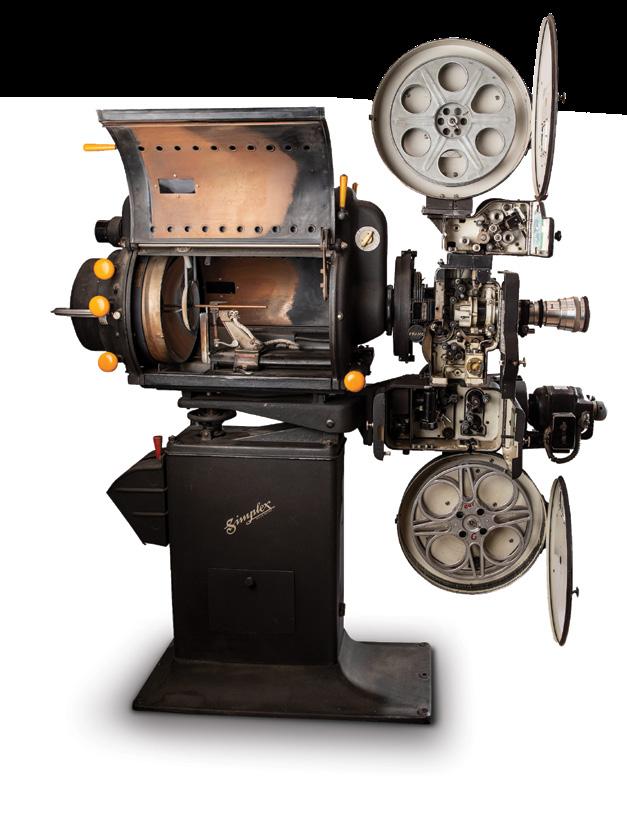
A Man, a Mesa, and a Quarry
Also in Legendary People, we have installed a new exhibit about Carl F. Eiberger, a lawyer who fought tirelessly to prevent South Table Mountain from becoming a 75-year rock quarry. Were it not for Carl, Golden today would experience more air and noise pollution, explosives blasting every Friday, and destruction of an iconic landform considered part of the “Gateway to the Rockies.”

12 DISCOVER I SPRING 2023
Photo © Justin LeVett Photography
A Founding Father of Golden
Jonas Wannemaker once lived just east of Golden in what was known as Arapaho City. He and his wife, Elizabeth, emigrated from Wisconsin to Colorado in 1859 and started life among the first residents in Golden. Come learn about Jonas and see he and his wife’s 25th wedding anniversary gift, in Legendary People

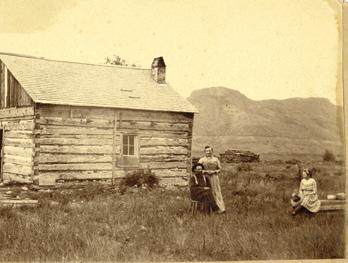
Golden Folks: Photography by Povy Kendal Atchison
Povy Atchison knew she wanted to be a photographer by age 12. Today, she has her own studio and a thriving photography business. Povy’s favorite subject to shoot is people. She has a way of capturing light, facial expression, and composition that tells a deep and connecting story about her subjects. Come see photographs of everyday people who have impacted Golden in numerous ways, on display until September 2023 in The Salon and Library at GHM&P.
Coming soon:
A Tale of Vigilante Justice
Late one night between Christmas and New Year’s, in the year 1879, two prisoners were taken from the Jefferson County Courthouse jail by an angry mob. These men were handcuffed and dragged to a nearby trestle bridge, where they were hanged for their crime against an innocent Golden resident. Who were these men? What does a carving of a birdcage have to do with this lynching? Coming soon to our Epic Events gallery, see artifacts and read the story of this most unusual incident from nearly 150 years ago.
An Amalgam of a Dentist and a Mason
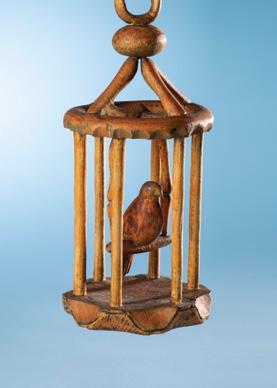
Dr. Leslie C. Anderson was one of Golden’s first dentists. He was also a member of the Freemasons and a prominent Golden citizen. Learn about Dr. Anderson, his practice, his family, and Masonic history in the Legendary People gallery where we will display Dr. Anderson’s impressive 100-year-old Masonic uniform. Then, hop back over to Epic Events to view a beautiful handmade wedding gown worn by Dr. Anderson’s granddaughter on her wedding day in Golden in 1982. Keep an eye on GoldenHistory.org for up-to-date information about these upcoming exhibits.

A Golden Anniversary
Golden High School turns 150 years old this year! Come see artifacts, photos, yearbooks, and more at our Salon exhibit about Colorado’s oldest continuously operating high school. Mark August 24, 2023, on your calendar for a fun reception featuring music, activities, and more.
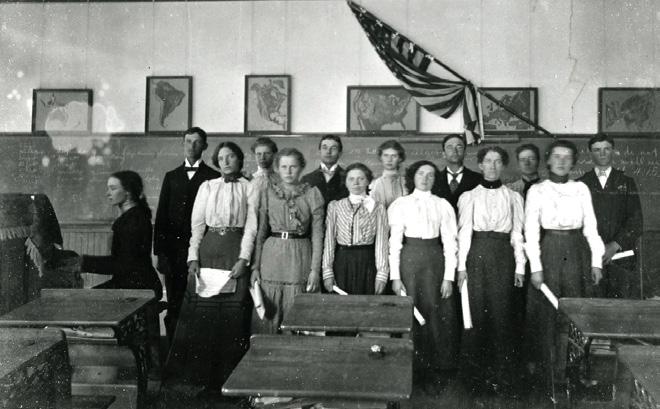
DISCOVER I GoldenHistory.org 13
Photo © Justin LeVett Photography
Photo © Justin LeVett Photography
Photo © Golden History Museum & Park, City of Golden Collection
Photo © Golden History Museum & Park, City of Golden Collection
Roundup Education
By Jesse Gagnon
As temperatures cooled and the leaves started to turn, the museum piloted a number of on-site programs for our local youth. The goal for these programs was to explore interest in additional programming outside our very popular summer camp programs. While these experiments proved challenging in many ways, they also demonstrated the available opportunities to welcome kids to the museum outside of the summer season.
Survival Club Level 1
After School Program
September to November
Over eight weeks, 21 children aged 6 to 12 worked hard to earn their Survival Club certificates after school at Golden History Park. Survival Club was taught by Colorado native and expert survivalist Aaron “Hutch” Hutchings. During this after school program, Hutch introduced participants to survival skills ranging from signaling, navigation,
knife safety, fire safety, and shelter building. For each skill, Hutch showed the kids how to take advantage of their natural surroundings, whether using the sun to communicate distress or pine needles to help start a fire. One surprise running this program was that 75% of the attendees were joining us at the museum for the first time. Survival Club Level 1 will be back in 2023, with separate options for ages 6-8 and 9-11.
Enchantments & Mysteries and Historical Concoctions
School Break Programming
October and November
Throughout the school season, most elementary school calendars have a variety of no-school days. These are often quieter moments at the museum and times when parents are looking for something fun for their kids to do. In 2022, we piloted two half-day programs over the Fall and Thanksgiving Breaks. During these two
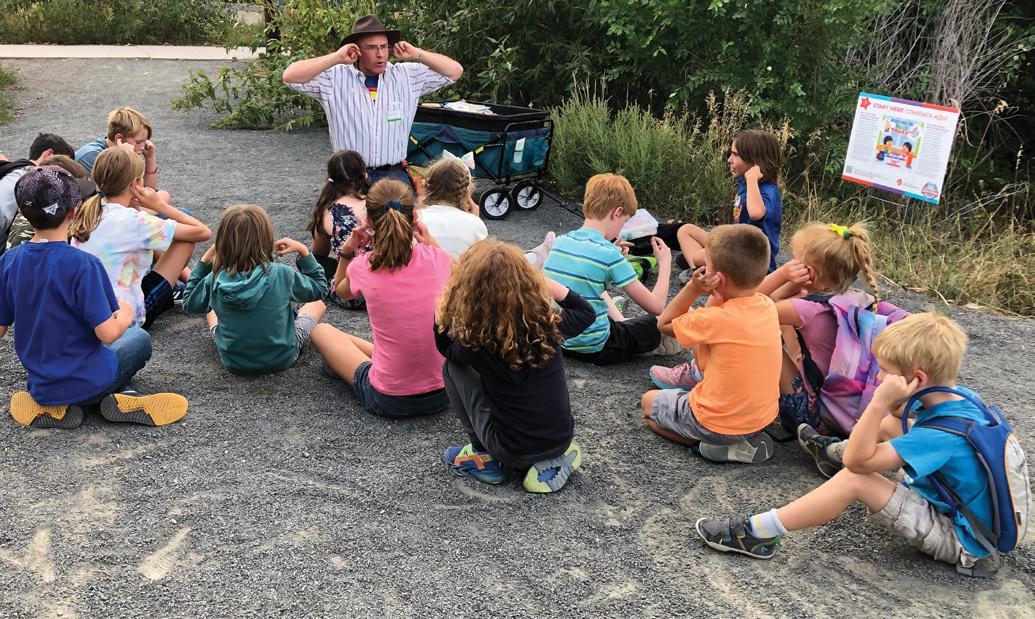
programs, kids aged 6 to 12 explored the history of Halloween and Día de los Muertos, performed dry-ice experiments, completed their own archaeological digs, and designed their own chocolates. These small pilot programs provided us with lots of ideas for how to improve. We plan to host fullday programs during select school breaks starting in fall 2023.
Survival Kits 101, Spring Break
The museum piloted its new Spring Break programming on March 20 and 21, in which survivalist Hutch taught participants how to build their very own survival kits using many objects found around the home. Participants practiced fire skills, knife safety, signaling, and how to respond to injuries and dangerous situations. It was truly exciting to see the participation of past Survival Club graduates who further developed skills introduced during Survival Club in the fall.
14 DISCOVER I SPRING 2023
Upcoming Youth Programs
After School
Survival Club Level 1 with Hutch
Join us for six weeks of after-school
Survival Club with Colorado native and expert survivalist Aaron “Hutch” Hutchings. Each week will feature a unique activity or skill as participants work to earn their Survival Certificate Level I from Golden History Museum & Park. Participants will learn skills such as fire safety, signaling, and knife handling.
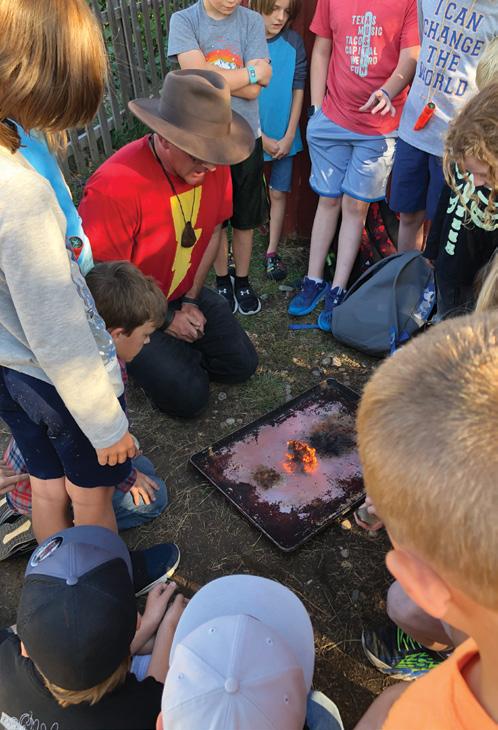

Club Dates
• Ages 6-8: Mondays 4 - 6 p.m. starting September 11.
• Ages 9-11: Tuesdays 4 - 6 p.m. starting September 12.
School Breaks
School break programming subject to change.
Enchantments & Mysteries

October 19-20, 2023; 9 a.m. - 4 p.m.
Historical Concoctions
November 20-21, 2023; 9 a.m. - 4 p.m.
Winter Skills with Hutch
December 20-21, 2023; 9 a.m. - 3 p.m.
Outreach Program Stats
Last year was our first full calendar year of outreach programs since school programming returned after the pandemic. The museum offers three outreach programs for elementary schools in the Denver Metro Area: Building Colorado Communities for third grade, Building Colorado Cities for fourth grade, and our new program for the 2022-2023 school year, Ute Knowledge: STEM Kit offered in partnership with History Colorado.
January – December 2022
Number of schools served 155
Number of classrooms ............... 361
Total Student Participation 10,367
Total Miles Traveled..................... 7,625
DISCOVER I GoldenHistory.org 15
Visit our website and select the “Learn” tab to learn more about our Outreach Programs.
GoldenHistory.org
Staff Profile
Stephanie Gilmore
Stephanie began working for GHM&P in November of 2022 and oversees the collections and exhibits. Before she joined the Golden team, she was the curator of collections at the Colorado Railroad Museum for seven years. She has been in the museum business since college and has worked as a registrar, collections manager, curator, and conservation technician, to name a few, at the Denver
Volunteer Profile
Gayle Zorrilla
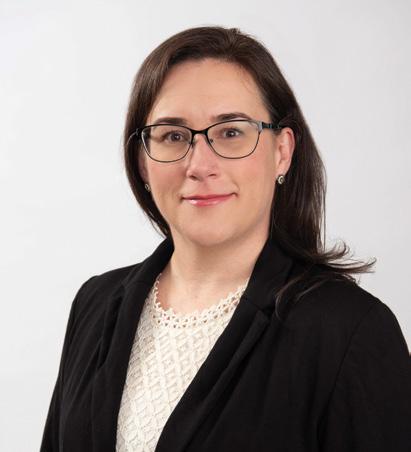
Gayle Zorrilla wasn’t looking for an ongoing volunteer commitment when a dear friend and volunteer extraordinaire asked for help with an Astor House Christmas Tea. “She said I could watch the presentation on Victorian underwear for free if I helped serve tea at the event. Plus, I would get to wear a costume.” Thus began a relationship with Golden History Museum and Park (GHM&P) that continues to this day.
Each summer, Gayle puts on her costume to welcomes guests to the Pearce/ Helps Cabin during Homestead Open House weekends. “It’s super fun to help people realize what was, and wasn’t, so different about life on the frontier,” she explains.

Art Museum, CU Boulder Museum of Natural History, Molly Brown House, and the Denver Museum of Nature and Science. Born and raised in the San Francisco Bay Area, she earned her bachelor’s degree in anthropology with an emphasis in archaeology from the University of California at Berkeley in 2005. Shen then moved to Colorado and earned her master’s in museum studies and archaeology from the University of Denver in 2008. In her spare time, she volunteers on the board of the Cat Care Society, an all-cat animal shelter. An avid crafter, Stephanie enjoys making gifts for friends and family. She also enjoys traveling and cooking, and lives in Lakewood with her husband, Erik, and their beloved “furry” children—a dog and a cat.
“The woodstove doesn’t have any temperature gauges or heat settings, but the cooktop produces a mean applesauce and the scent of bread fresh from the oven can’t be beat. That hasn’t changed!” She also enjoys getting creative with her offerings to the public. “I’ve demonstrated making dried herb bundles and concocted infused waters using locally native in-season fruit when it has been too hot to light the stove. I’m always on the lookout for ideas.” Learning about backyard poultry husbandry as part of the Chicken Caretakers Team is her newest role with GHM&P. She regularly shows off (and digs worms for) the heritage breed hens that live in the historic coop. “‘Going chickening’ has become a thing at my house,” she says. As in, “I’ll be home late; I’m going chickening after aerobics class.”
A Midwest native and editor of peerreviewed journal manuscripts by trade, Gayle has been a Goldenite since 2006. She and her husband, Ruben, enjoy soaking up the Colorado sunshine and exploring the JeffCo Open Space trails.
16 DISCOVER I SPRING 2023
Golden High School Yearbooks to be Digitized
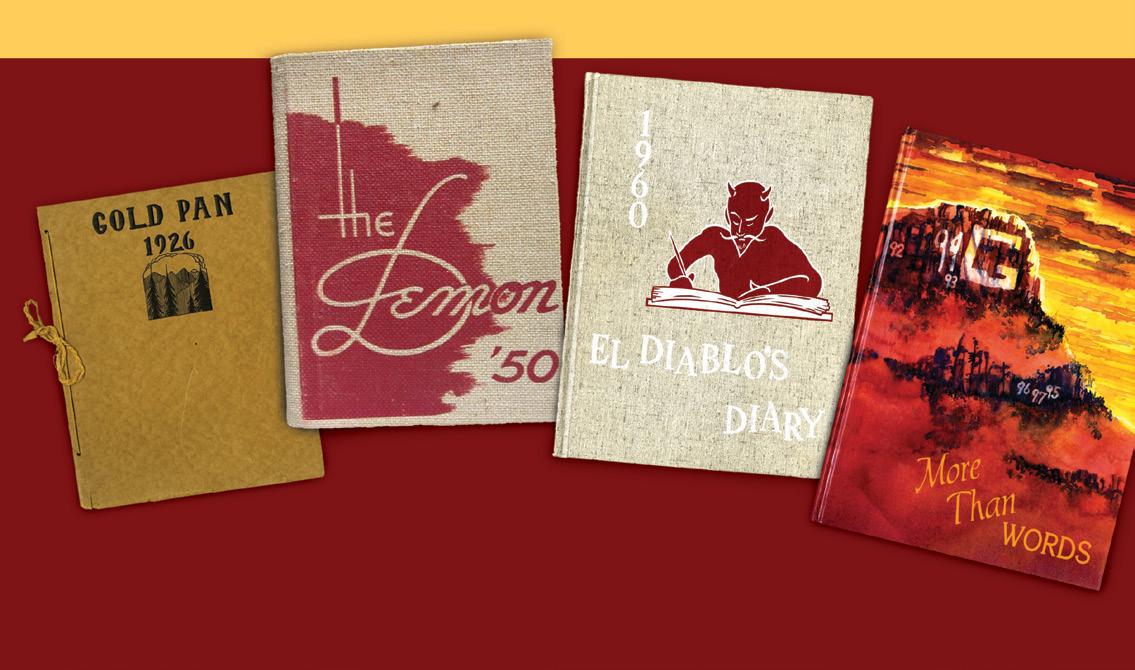
Golden High School (GHS) has a momentous anniversary this year—it is turning 150 years old! As the oldest continuously operating high school in the state of Colorado, it has produced thousands of graduates since its inception in 1873.
One of Golden History Museum & Park’s (GHM&P) most requested collections to view by visitors is our significant, yet incomplete, collection of GHS yearbooks. While we don’t know when yearbooks started to be made, we have some dating from the early 1900s, all the way to the present day.
In honor of this special anniversary, GHM&P is embarking upon a large project to digitize as many yearbooks as possible from the combined collections of the museum, GHS, and its Alumni Association. While these three institutions together have a great collection, there are still volumes missing. Namely, we are missing most yearbooks from before 1940. If you have any pre-1940 yearbooks that you are willing to lend to be digitized (or that you wish to donate), please contact our curator, Stephanie Gilmore, at SGilmore@GoldenHistory.org. Once this project is completed, anyone with internet access will be able to virtually
leaf through the yearbooks, page by page, at GoldenHistory.org. Look for project updates via The Golden Informer and our website.


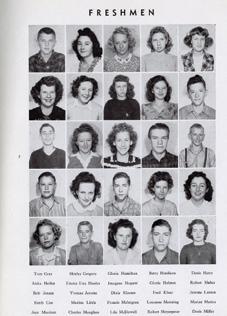
Also watch for our upcoming exhibit about the history of GHS, opening August 24, 2023
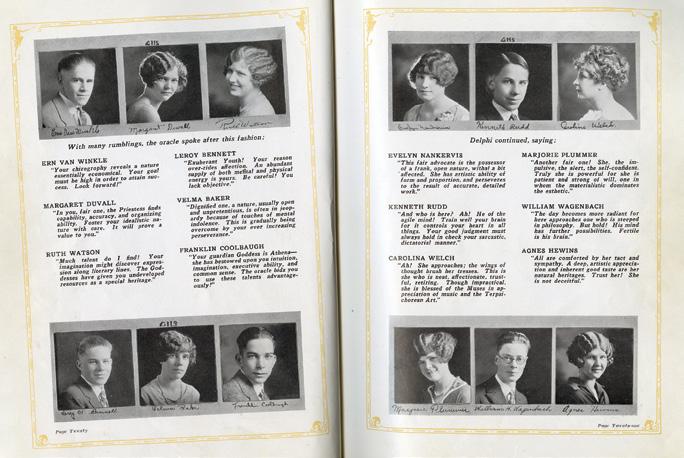
DISCOVER I GoldenHistory.org 17
1945
1926
Photos © Golden History Museum & Park, City of Golden Collection
Golden History Museum & Park
Donors January — December, 2022
Dale and Linda Baker
$10,000+
Colorado Humanities Scientific and Cultural Facilities District City of Golden
Community First Foundation
Suzy McKee
$1,000 — $9,999
Pat Spieles
Anonymous
The Denver Foundation, Greenwood Fund
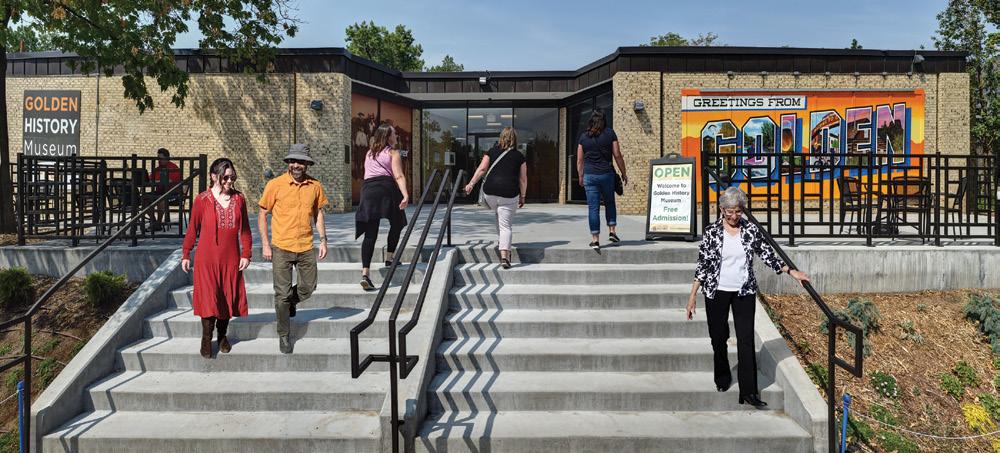
Downtown Development Authority
Steve and Cynthia Enger
Mark and Nancy Foster
Chris E. Albrecht
Darryl and Cheryl Annett
James and Joy Bauman
Nancy Bell
Robbie and Gary Berlin
Bill and Carol Bleau
Shelly and Nick Bleckley
Betty Bloom
Jennie and Charles Boeder
Robert Bolt
Grace Bonar
Jack and Joy Brandt
Merv and Judi Chapman
Linda Churches
Thomas and Julie Clark
Linda Condron
Jim and LouAnne Dale
Ingrid Depta
Jane Diggs
Pat Donahue and Kevin Skeate
Linda and Preston Driggers
Ewers Architecture
Sheryl and Steve Fassino
Kristine and Kevin Fletcher
Richard Flint
William and Frances Fraser
Norma Fricke
Dorothy and Michael Gleason
Friends of Golden History Museum & Park
Golden Civic Foundation
Victoria Reigns
Danielle and Louis Samuels
Kathleen Weller Horky and Kevin Horky Statewide Internet Portal Authority
Elaine and Joseph Marolla
John and Andi Pearson
$100 — $999
Wendy and Rick Goad
Golden Lions Club
Martha Gould
Jay and Rogene Green
George Griffin
Elnore and Ron Grow
Lynne Haigh
Travis and Sarah Hartsburg
Margaret B. Henderson
Steve Hughes and Sue Cornish
Joyce Jennings and William Cox
Janet Johnson
Paul and Karen Jones
Justin LeVett Photography
Sabrina Keller
Sharon and Robert Kirts
John and Karen Lynch
Mary Anna and Walter Madden
Pat and Judy Madison
Kelly Mayhew
Tara Meininger
Elizabeth and Karl Merritts
Bob Metz
George Meyers and Merrill Wilson
Jan Monnier and Mike Fehn
Barbara Morris
Carl and Anne Mulay
Vicki and Daniel Olson
Dan Orcutt and Teresa Mills
Justin and Sarah Wade
Karen and Leon Oxman
Bryan Palmintier and Michele Minihane
Don and Mary Parker
Mark and Cathy Pattridge
Mary and Charlie Ramstetter
Deborah Richardson
Steven Schwartz and Alice Tariot
Kermit Shields
Clare and Daniel Shier
James and Melanie Smith
Victoria Smith-Campbell and Gary Campbell
Susan Speer
Tall Pines Painting, Inc.
Michael and Marla Tamburro
Finnuala Tessier
Robert Thresher
Jim Geis and Beverly Walter
Barb Warden and Frank Blaha
Tom Weimer
Laura and Michael Weinberg
Angela and Tom Wheaton
Jeanne Whittaker
Mike and Mary Wood
Alan and Elizabeth Woodard
Frank Young and Terre Deegan-Young
Jeramy and Alicia Zimmerman
Monica and Craig Zorman
18 DISCOVER I SPRING 2023
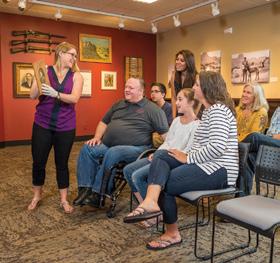
DISCOVER I GoldenHistory.org 19 Membership Be a part of Golden history. Become a member today! Join or Renew Today Call, mail, or stop in. 923 10th St., Golden, Colorado 80401 l 303.278.3557 Thank you for supporting Golden History Museum & Park YES, I want to support Golden history. Director’s Circle ($1,000) Founder ($500) Benefactor ($250) Patron ($125) Household ($75) Dual ($60) Individual ($40) Seniors (65+) may deduct 10%. Please accept my extra, tax-deductible donation of $25 $50 $100 $ (other) Total enclosed $ Name Address City, state, zip Credit card # Exp. date Signature Phone Email (opt-in for e-newsletter, opt out anytime) GoldenHistory.org/member
Coming Soon to The Salon
Topo-Embroideries: Works by Kathy
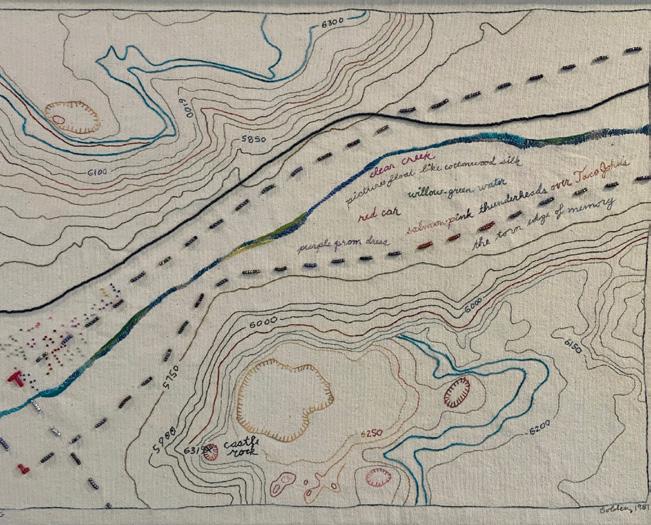 Mitchell-Garton
Mitchell-Garton
September 14, 2023 - May 4, 2024


Igrew up in Golden, at the base of Mt. Zion under the “M.” The view from our living room window was of Castle Rock and South Table Mountain, and I loved looking out the window over the valley. The fondness I developed for the geography of Golden led me to incorporating map imagery into my art. The linear quality of topographic maps lends itself well to embroidery. I love the way maps create abstract forms and patterns and are simultaneously a kind of language that tells the story of the landscape. To further tell my own story of this place, I layer linens, buttons, lace, beads, and words into the artwork, and use stitching to pull all the threads together.
Golden, 1981 by Kathy Mitchell-Garton
923 10th St., Golden, Colorado 80401











 By Stephanie Gilmore
By Stephanie Gilmore





































 Mitchell-Garton
Mitchell-Garton
